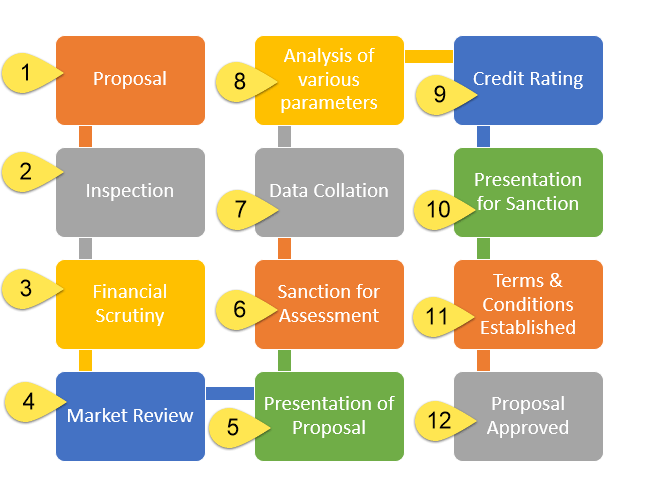Accounts receivable is the amount owed to a company resulting from the company providing goods and/or services on credit. The term trade receivable is also used in place of accounts receivable.
The amount that the company is owed is recorded in its general ledger account entitled Accounts Receivable. The unpaid balance in this account is reported as part of the current assets listed on the company’s balance sheet.

When goods are sold on credit, the seller is likely to be an unsecured creditor of its customer. Therefore, the seller should be cautious when selling goods on credit.
Good accounting requires that an estimate should be made for any amount in Accounts Receivable that is unlikely to be collected. The estimated amount is reported as a credit balance in a contra-receivable account such as Allowance for Doubtful Accounts. This credit balance will cause the amount of accounts receivable reported on the balance sheet to be reduced. Any adjustment to the Allowance account will also affect Uncollectible Accounts Expense, which is reported on the income statement.
Example of Accounts Receivable
A manufacturer will record an account receivable when it delivers a truckload of goods to a customer on June 1 and the customer is allowed to pay in 30 days. From June 1 until the company receives the money, the company will have an account receivable (and the customer will have an account payable).
Cost of Maintaining Receivables
Maintaining receivables bears cost. It includes cost of investment in receivables, bad debt losses, collection expenses and cash discount. Costs related with receivables and their calculation are as follows:
1. Cost Of Investment In Receivables
This is the opportunity cost of funds being tied up in receivables, which would otherwise have not been incurred if all sales were in cash. The cost of investment in receivable is calculated as:
Cost of receivables = Investment in receivables X Opportunity costs
Here,
investment in receivables = (FC+ VC)/Days in year) X DSO
Where, FC = Fixed Cost, VC = Variable Cost and DSO = Days sales outstanding.
2. Bad Debt Losses
This is the loss due to default customers. Extension of credit to low quality-rate customers results into increase in bad debt losses. Bad debt losses are calculated as a percentage on sales as shown in equation below:
Bad debt losses = Annual credit sales X Percentage default customer
3. Collection Expenses
This is the cost incurred for operating and managing the collection and credit department of a firm. This includes the administrative cost of credit department, salary and commission paid to collection staff, cost paid for telephone and communication and so on.
4. Cash Discount
It is the cost incurred to induce the customer for early payments of their accounts. A firm can offer cash discount to its customers to reduce the average collection period, bad debt losses, and the cost of investment in receivables. The discount cost is calculated as cash discount percentage multiplied by sales to discount customers as given below:
Discount Cost = Annual credit sales X Percentage discount customer X Percentage cash discount
Objectives of Receivables Management
Following are the objectives of receivables management which will help us to understand the purpose of receivables:
- To optimize the amount of sales
2. To minimize cost of credit
3. To optimize investment in receivables.
4. To increase credit sales.
Therefore, the main objective of receivable management is to create a balance between profitability and cost.
Accounts receivable recorded in the financial statements
Usually, the businesses expect to receive money in the future, so it is to be added to the assets in the financial statement of the business. The accurate record keeping of this money that is receivable (accounts receivable) in the books of accounts are required to avoid any default in the payment due.
Few pointers connected to recording accounts receivable are as follows :
a. Establishing the practice of credit transactions:
The business may establish a practice of providing a credit policy to its buyers. This credit can be extended for a specified time period and any default in this payment usually attracts penalty. This practice of credit facility requires two parties to come to an agreement on the terms and conditions for such credit transactions. The provider of this facility should also verify the paying ability of the customer before agreeing to any terms and conditions.to prevent loss of cash inflow.
b. Generating invoices for the customer:
The businesses are required to generate invoices of the sales made or services delivered. The invoice should have details of the cost of goods and services sold to the customers. This generating of invoice ensures the recording of the credit transaction clearly in the accounts of the business. Further, a copy of the invoice is given to the customer to make the payment as per the agreed terms.
c. Tracking the payments received and the payment that is due to be received:
An accountant is required to track the payments received or due from the customers. The details of the method of payment and date of receiving payment have to be recorded in the customer’s ledger account. This ensures correctness of accounting of the credit amount. The businesses shall also generate timely reminders for dues pending to the customers.
d. Accounting for the accounts receivable
The accountant or the person responsible for taking due care of the account’s receivables must record all the due dates of the payments to be received. The timely and prompt recording of the accounts receivable leads to receiving the payments on time from the customers. Once the account receivable is recorded and payment is received, the account for the said party can be settled for good.